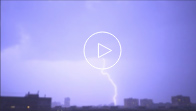November 4, 2021 Posted by Pocketstop in Crisis Communications, Business Continuity, Mass Notification Social Share
After extreme drought and fires this summer, the freeze in Texas this past February from winter storm Uri seems like the distant past. However, there have already been some major storms on both coasts this fall and it’s likely we will see more. The weather pattern known as El Nina will continue for the second year in a row. While this could mean less snow for some regions, it can also mean more severe weather. As we have seen in recent months, it is critical to be prepared and have a crisis communication plan when these major events occur.
Another contributing factor that complicates emergency communication is the ongoing pandemic. It has changed the way we work and live, with many more employees and even students being remote. But it hasn’t been all bad – companies have taken the opportunity to foster a more supportive culture that includes physical and mental health, employee safety, and leveraging technology. Additionally, with a dispersed workforce often juggling multiple responsibilities, the expectation of clear and timely communication is at an all time high.
If a blizzard, extreme freeze, icy roads, or other weather event impacts your physical location, results in a power or other outage, or impacts travel for on site employees, how can you best communicate with your team?
Crisis Communication Lessons to Learn from the Texas Winter Storm Uri
One of the most challenging aspects of the February freezing temperatures was that most people were not prepared. Reacting in the moment limits reach, clarity, and safety. Early preparation is necessary and it never hurts to have a plan for the worst case scenario.
1. Early and thorough preparation really is key.
Review and update your crisis communication plan and relevant communication drafts yearly, while gathering updated recipient data for communication more often. Nicole Peterson of Hexion describes how the chemical company tackles preparation: “We include all functions (operations, maintenance, EHS, human resources, procurement, etc.), which in addition to management alignment is key.” They also hold a debriefing session after each storm event to learn ways to improve.
Here are some practical steps from the Standard Operating Procedure from Nieomi King, Regional Marketing and Communications Manager, Fort Hood Family Housing:
-
- Identify your triggers to deploy messaging.
- Ensure you have accurate contact information for customers, employees, vendors, etc.
- Provide educational tips on how to react to a crisis in your home – i.e. How to prevent bursting pipes and how to locate where the water shut off is.
- Prepare your communication subjects and messages in advance and be sure to gather all pertinent data.
- Always have a secondary WiFi connection and alternate battery source so you can deploy messaging.
- Always have an alternate point of contact should your communications manager become a victim to the weather.
2. Practice crisis scenarios.
Having a plan is critical, and rehearsing it will make it even stronger. A couple of items to keep in mind while practicing:
- Test your emergency communications plans. It’s the only way to know where gaps are before a crisis happens. Who will send notifications and through what channels? What will the messages say? Does this system perform as expected? Peterson also shared that they plan to test their communication systems on a monthly basis.
- Be flexible and creative with resources, responses and processes. In an emergency situation it will be necessary to use assets and employees in different ways. If this is already part of a response plan it won’t be so jarring.
3. Communicate effectively, through multiple channels.
Send constant, clear and honest communication to keep everyone up to speed as the situation develops. People are more forgiving when they have clear and regular communication, even if it is just an acknowledgement of the situation and as leaders, you are still assessing next steps. It also discourages any misinformation from circulating.
- Be honest and empathetic to the situation. There can be a lot of emotion or unexpected reactions during emergencies, so it is important to be sensitive to the stress involved as well as any shortcomings in addressing the event.
- Make sure communication is on brand and aligned with your values. A cornerstone of good communication is considering your audience and crafting messages that are clear, are sensitive to the situation and convey your values. A recent article on PR Daily shared examples of corporate communications, including successful companies like HEB who shared meaningful updates including how they were working with the community, while ERCOT shamed people for using any power. It’s clear how messaging can have both immediate impacts and long term effects, positive or negative.
- Utilize multiple types of communication. The current workforce is more dispersed, and during an emergency normal modes of communication might not be reliable, resulting in a need for multiple ways of reaching people. This is especially true in a weather event when the internet and power are disrupted.
King explains how critical multi-channel functionality was for her team: “People need multiple channels of communication, especially when they don’t have access to their primary one. Using RedFlag helped us reach them in multiple locations as the primary and secondary contacts were utilized with both email and text. We sent out emails, text messages, made phone calls, and posted Facebook notifications. We found that texting both our residents and our employees was very effective and allowed us to provide specific instruction on responses. When we received responses from the text messages, we appreciated the ability to reach our residents and team members with a medium we didn’t have prior to RedFlag.”
Steve Young, Vice President of Technology & Innovation, VIA Metropolitan Transit, shares how his organization handled communications during the storm: “Conditions were changing rapidly and that meant that VIA needed a way to quickly get information out to our employees. RedFlag helped us communicate to all of our employees during the storm, even getting messages to the cell phones of our employees, when their homes were without power. It is important to keep communicating with customers and employees about the rapidly changing conditions and associated changes in transportation availability and service. Good advice is to make sure communications plans and tools to communicate are readily available during emergencies. In our case RedFlag was always available and could easily launch mass alerts, even from a cell phone.”
4. Monitor receipt and responses.
It is not enough to simply send messages; the next step is to observe employees’ reactions and responses. Often this step is neglected in a crisis communication plan. Dan Brahmy is CEO of Cyabra, which uses artificial intelligence to detect disinformation online, “When [a] crisis strikes, business leaders need to keep a pulse on how their audiences are reacting to the situation in order to properly acknowledge those viewpoints, and adapt their plans to accommodate those needs,” he observed.
- Follow up when necessary, or even require a response to your messages so you can better gauge the reach and effectiveness of your communications.
- For King, the follow-up messages were critical for her employees and residents during the winter storm. “We sent out [mass alerts that included] text messages to check on team members with specific instructions to contact us if they were in distress or needed help. Through this, we were able to help find alternate accommodations for those without power or water. One employee was too frightened to drive and was guided out of her home and to another team member’s home. If we had not sent these text messages, we would not have known their needs.”
Planning for a crisis like extreme winter weather is easy to postpone. However, now is the time to prepare. A thorough plan that includes practicing, drafting communications for multiple channels, and a method for monitoring and following up will ensure that your teams are safe and feel confident in leadership’s response.
Find out more about how RedFlag’s mass communication platform can greatly help you with your crisis communication plan.
Social Share


